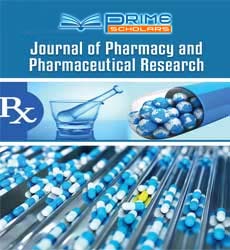Commentry - (2022) Volume 6, Issue 5
The Role of Post Marketing Surveillance in Clinical Trials
Kateb Antonio*
Department of Pharmacy, University of Federal, Brazil
*Correspondence:
Kateb Antonio,
Department of Pharmacy, University of Federal,
Brazil,
Email:
Received: 03-Oct-2022, Manuscript No. IPIPR-22-14540;
Editor assigned: 05-Oct-2022, Pre QC No. IPIPR-22-14540 (PQ);
Reviewed: 19-Oct-2022, QC No. IPIPR-22-14540;
Revised: 24-Oct-2022, Manuscript No. IPIPR-22-14540 (R);
Published:
31-Oct-2022, DOI: 10.21767/IPIPR.22.6.21
INTRODUCTION
The FDA Adverse Event Reporting System (FAERS) is a motorized
information database designed to support the FDA’s post-marketing
safety surveillance program for all approved medicine and
remedial birth products. The ultimate thing of FAERS is to ameliorate
the public health by furnishing the stylish available tools
for storing and assaying safety reports. The reports in FAERS are
estimated by a multidisciplinary staff safety observer, epidemiologists
and other scientists in the Center for medicine Evaluation
and Research’s (CDER) Office of Surveillance and Epidemiology to
descry safety signals and to cover medicine safety. As a result, the
FDA may take nonsupervisory conduct to ameliorate product safety
and cover the public health, similar as streamlining a product’s
labeling information, transferring out a” Dear Health Care Professional”
letter, or re-evaluating an blessing decision.
Description
The Med Watch software is for fitness specialists and the general
public to voluntarily record critical reactions and issues with clinical
merchandise, including tablets and clinical devices. It additionally
guarantees that new protection statistics is unexpectedly
communicated to the clinical network thereby enhancing affected
person care. All facts contained at the Med Watch shape might
be entered into the AERS database. The Med Watch web page
consists of sections on the way to record an unfavorable occasion,
protection statistics, and publications. For greater statistics on the
way to record unfavorable activities, see Reporting Problems to
FDA. The Division of Drug Marketing, Advertising and Communications
web page additionally consists of different beneficial drug
marketing and marketing and surveillance statistics. After a drug is
authorized and advertised, the FDA makes use of exclusive mechanisms
to guarantee that corporations (1) adhere to the phrases
and situations of approval defined within side the software and
(2) that the drug is synthetic in a constant and managed manner.
This is achieved via way of means of periodic, unannounced inspections
of drug manufacturing and manages centers via way of
means of FDA’s discipline investigators and analysts. Manufacturers
of prescription clinical merchandise are required via way of means of law to publish unfavorable occasion reviews to the FDA.
The Med Watch web website online affords statistics on obligatory
reporting via way of means of manufacturers. FDA gets medicinal
drug mistakes reviews on advertised human tablets (such as prescription
tablets, customary tablets, and over the counter tablets)
and no vaccine organic merchandise and devices. The National Coordinating
Council for Medication Error Reporting and Prevention
defines a medicinal drug mistakes as “any preventable occasion
which can motive or cause irrelevant medicinal drug use or affected
person damage at the same time as the medicine is within
side the manager of the fitness care expert, affected person, or
consumer. Such activities can be associated with expert practice,
fitness care merchandise, procedures, and systems, such as prescribing;
order communication; product labeling, packaging, and
nomenclature; compounding; dispensing; distribution; administration;
education; monitoring; and use.” CDER medicinal drug
mistakes software workforce evaluation medicinal drug mistakes
reviews dispatched to the USP-ISMP Medication Errors Reporting
Program and Med Watch, examine causality, and examine the
facts to offer comments to others at FDA.
Conclusion
In the last ten years, reports of drug items that don’t work in
patients because they’re harmful or just have no impact have
increased at the FDA’s Center for Drug Evaluation and Research.
The majority of the time, switching medicine brands is blamed for
these issues. The Therapeutic In equivalence Action Coordinating
Committee (TIACC) was established by FDA in CDER on September
14, 1988, with the goal of identifying and assessing reports of therapeutic
failures and toxicity that may suggest that one medicine is
not equal to another similar product.
Acknowledgement
The author is grateful to the journal editor and the anonymous
reviewers for their helpful comments and suggestions.
Conflict Of Interest
The author declared no potential conflicts of interest for the research,
authorship, and/or publication of this article.
Citation: Antonio K (2022) The Role of Post Marketing Surveillance in Clinical Trials. J Pharm Pharm Res.6:21.
Copyright: © 2022 Antonio K. This is an open-access article distributed under the terms of the Creative Commons Attribution
License, which permits unrestricted use, distribution, and reproduction in any medium, provided the original author and source
are credited.

